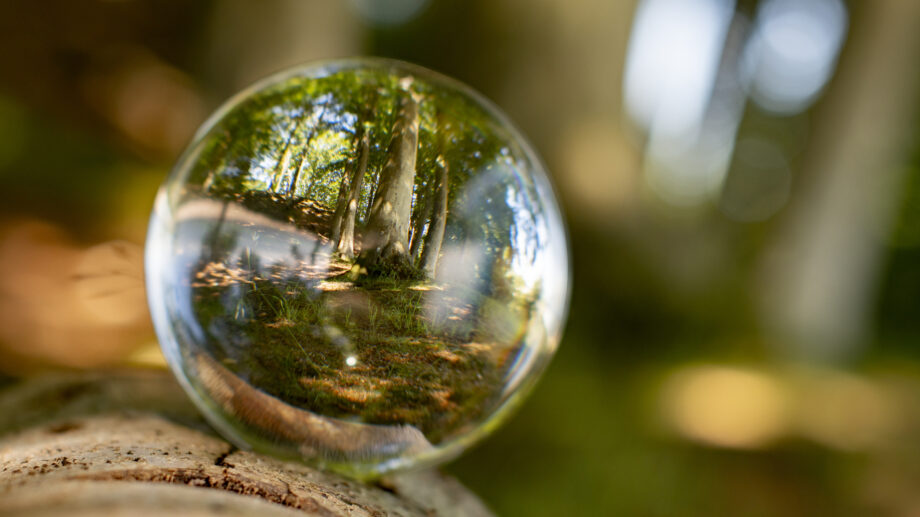December 18, 2023 — For the past decade and a half, a team led by Cambridge University conservation biologist William Sutherland has engaged scientists and practitioners from around the world in a unique annual activity: conducting a horizon scan to identify the top emerging technological, political, economic and related shifts most likely to have a substantial effect on biodiversity around the world in the year ahead. Over the years, the list has helped illuminate intended and unintended consequences in a way that offers benefit to both policy and practice.
This year’s horizon scan includes 15 key issues looming over biodiversity in 2024:
Hydrogen: Heyday or Mayday?
As efforts to allay climate change grow, hydrogen is becoming an increasingly popular alternative to conventional fuels. The extent to which tapping this alternative energy source benefits biodiversity, however, depends on how the hydrogen made. Hydrogen produced from natural gas continues reliance on climate-disrupting fossil fuels; production using freshwater or seawater as feedstock or tapping natural underground reservoirs poses potential unintended consequences in the form of habitat destruction or disruption. And unless hydrogen production, distribution and deployment systems are designed with care, they could end up contributing greenhouse gases of their own. Special effort will be needed to ensure the benefits outweigh the harms in ramping up this mixed-bag climate solution.
Ammonia Dilemma
Ammonia is a key ingredient in agricultural fertilizer. It also takes massive amounts of energy — currently largely derived from fossil fuels — to produce. A novel technique that involves spraying tiny droplets of water onto a magnetic mesh holds promise for dramatically reducing the cost and greenhouse gas footprint of ammonia production and so mitigating climate change. However, it also poses potential threats. For one, cheaper, lower-carbon ammonia production could spark an increase in fertilizer use and so the threat of air and water pollution. In addition, because fertilizer enhances soil microbes’ ability to produce nitrous oxide, a potent greenhouse gas, the net climate benefit could be far less than anticipated at first glance.
Mmm Mmm Microbes
The search for environmentally friendlier food sources has turned to the tiny — with huge implications for reducing threats to biodiversity from land conversion, overfishing, nutrient pollution and climate change. Researchers have developed methods for cultivating bacteria on hydrogen, nitrogen and carbon dioxide. The resulting product — already okayed for use as human food in Singapore — is relatively taste-free and easy to incorporate into a variety of manufactured foods to boost protein content. If the chemical inputs are produced using renewable energy, the product could have a dramatically lower climate footprint and overall environmental impact than meat, dairy and other conventional dietary protein sources.
Crops in the Dark
The process by which plants use sunlight, water and carbon dioxide to make food for themselves and other living things is both amazing and amazingly inefficient. Recently, researchers developed an alternative process that uses electricity, water and carbon dioxide to produce acetate, which then can be used in place of glucose produced by photosynthesis to stimulate plant growth. The biochemical workaround could dramatically increase the productivity of plants grown in artificial environments — and even, in some cases, eliminate the need for light. If the energy input to the system comes from renewable sources, the result could be highly efficient, environmentally friendly indoor food production that contributes to biological conservation by reducing the need to transform habitat into farmland.
Rock Dust
Among many strategies being considered for reducing the threat of climate change is to spread carbon-capturing rock dust on farmlands. Evidence showing the practice can also improve crops could speed application before other consequences, positive and negative, are clear. Possible additional benefits include increasing the presence of beneficial microorganisms in the soil, reducing nutrient threats to freshwater, and decreasing acidity in soil and seawater. Potential negative consequences include increasing the flow of silt to surface water, exacerbating heavy-metal pollution, harming organisms living in soil and encouraging increased mining. Supply, further elucidation of benefits, and the presence of government incentives or disincentives will all play a role in the extent to which this innovation is likely to be adopted.
Disappearing Earthworms
Earthworms play a vital role in many ecosystems — including farmlands — by recycling dead plant matter, releasing nutrients and enhancing soil quality. Silently doing their jobs beneath the surface, they are rarely seen or even thought about. A closer look, however, suggest it’s time to give them more serious consideration. A recent survey in the United Kingdom found that earthworm numbers have dropped by one-third or more over in the past quarter-century, likely due to increased pesticide use. If this trend holds true elsewhere — and if nothing is done to alleviate it — the loss could have huge adverse ramifications not only for ecosystem integrity, but for Earth’s ability to feed a hungry human population.
Listening to Soil
What does healthy soil look like? Conventional strategies for determining how healthy soils are and what they might need to be healthier require literally digging in — presumably a time-consuming and expensive task. Emerging technologies are making it possible to instead hear the condition of soil beneath the surface by using sound-capturing technology to identify the location and movements of underground invertebrates as they go about their activities of daily living. Known as soil ecoacoustics, the noninvasive approach could make it possible not only to easily characterize soil health, but also to track and enhance restoration of previously degraded soils, boosting their ability to serve as the literal underpinning of healthy, biodiverse habitats. Efforts are proposed to make the technology friendly enough for use by citizen scientists and to develop strategies for combining it with other approaches to environmental monitoring.
Smoke and Climate
The amount of smoke in the atmosphere is likely to increase in the future, thanks to growing frequency and intensity of wildfires. And it’s becoming increasingly clear that smoke in the air can have serious consequences for Earth’s climate. Particulates given off by intentional burning (for example, to clear forests or cook food) and other fires can disrupt normal climate cycles and alter how temperature and pressure are distributed in the atmosphere by blocking sunlight and redistributing moisture in the air.
Large-scale changes could easily alter the balance of nature, with potentially harmful consequences for biodiversity writ large.
Plants, animals, other living things and entire ecosystems have evolved to go with the flow of existing climate cycles. Large-scale changes could easily alter the balance of nature, with potentially harmful consequences for biodiversity writ large — and for humanity, which depends on healthy ecosystems for our own well-being.
The DNA Machine
Recent advances in genetic research have made it possible to (relatively) easily manufacture customized strands of DNA, and further work could lead to the ability to use a printing device to make long strands of genetic material that code for desired traits, then insert them into organisms. The result is a Pandora’s box of possible impacts for conservation, both positive and negative. On the upside, the technology could be applied to reduce the need to clear land for agriculture, minimize environment-polluting fertilizers and pesticides, boost organisms’ resilience to environmental change, and offer new methods of pest control. At the same time, indiscriminate or nefarious use could make it possible to produce variations on existing organisms that could replace non-engineered counterparts and disrupt ecosystems. The seemingly endless possibilities could lead to international efforts to regulate application.
Predicting Toxicity
Historically, humans have discovered whether a particular chemical is harmful to living things and ecosystems by deploying it and then observing the outcomes. Fortunately for all involved, a new approach is emerging. Scientists are exploring the use of existing information about how various types of chemicals behave in the environment, in organisms, and even at the molecular level to predict whether and how newly formulated compounds might have undesirable unintended consequences. Known as “adverse outcome pathways,” the approach could see rapid improvement with the help of machine learning, deep learning and artificial intelligence. The ability to prescreen substances in this way could make it easier to identify those that provide benefit, such as improved food production, with minimal harm.
Bird Basher Alert
Each fall, billions of birds representing more than 100 species fly south from Europe along a path that bifurcates at the Red Sea. Rising directly in their path as part of Saudi Arabia’s NEOM megacity development is a skyscraper complex covering 34 square kilometers (13 square miles) and rising 500 meters (1,600 feet) into the sky. Perched at the north end of the Red Sea, covered with reflective surfaces, and potentially sporting wind turbines, the mega-building as currently designed could become a death trap for the multitudes of migratory birds known to use the flyway. With no environmental assessment in place to identify or serve as a base for plans to mitigate the threat, scientists worry that a massive skyscraper slaughter might ensue, disrupting ecological balances as a paucity of passerines alters the eat-and-be-eaten worlds at both ends of the migratory pathway.
Death of the Urchins
Sea urchins play a pivotal role in maintaining the integrity of coral reefs by nibbling on algae that otherwise would overwhelm the ecosystem. So when massive urchin die-offs occurred in both the Caribbean and Mediterranean seas in 2022 and then appeared to spread to the Red Sea, scientists knew it spelled trouble for underwater ecosystems. Although the cause for the European die-offs remains a mystery, researchers were able to implicate infection with a ciliated microbe as the likely cause of the western Atlantic disaster. If a similar microbe turns out to be the culprit in the Mediterranean, it might be a sign of a shift in environmental conditions that favors the growth of ciliate microbes in other marine environments. Cascading impacts could be devastating, since this class of pathogens is known to infect fish, corals, crabs and other ocean creatures.
Storing Carbon in the Ocean
Too much carbon dioxide in the atmosphere? Call in the ocean! Covering nearly three-quarters of Earth’s surface and well known for its ability to soak up CO2, the seven seas are being eyed as promising candidates for removing excess quantities of the planet-warming gas humans have spewed into the atmosphere. Active strategies being proposed to enhance the oceans’ capacity to take up CO2 include adding fertilizer to seawater, growing and then sequestering algae, raising ocean water’s pH and actively injecting CO2 into rocks beneath the surface. As good as this all sounds, the horizon scan authors write, proponents would do well to keep a couple of things in mind as they make decisions about whether and how to implement them. First, these strategies are largely untested, so no one really knows how good they will be at storing carbon. Second, there is much potential for unintended adverse consequences for biodiversity and society.
Trouble in the Twilight Zone?
The mesopelagic or “twilight” zone of the ocean, a region 200 to 1,000 meters (700 to 3,000 feet) below the surface, is home to rich concentrations of fish and other ocean life. These creatures in turn provide abundant organic matter for the deep ocean as feces and carcasses sink toward the ocean floor, nourishing deep-sea creatures in the process.
As Earth’s atmosphere warms due to increasing concentrations of greenhouse gases, the twilight zone is warming, too.
Not only that, but eventually some of this material is buried in sediment, sequestering planet-warming carbon from the atmosphere in the process. If the sinking organic matter comes in large pieces, it sinks faster and tends to store carbon far longer than if it comes in smaller portions. The challenge? As Earth’s atmosphere warms due to increasing concentrations of greenhouse gases, the twilight zone is warming, too. Scientists are concerned that this warming will cause the organic matter to break down more quickly, reducing its ability to both feed sea life below and sequester carbon.
Current Events
Related Posts
Ensia shares solutions-focused stories free of charge through our online magazine and partner media. That means audiences around the world have ready access to stories that can — and do — help them shape a better future. If you value our work, please show your support today.
Yes, I'll support Ensia!




